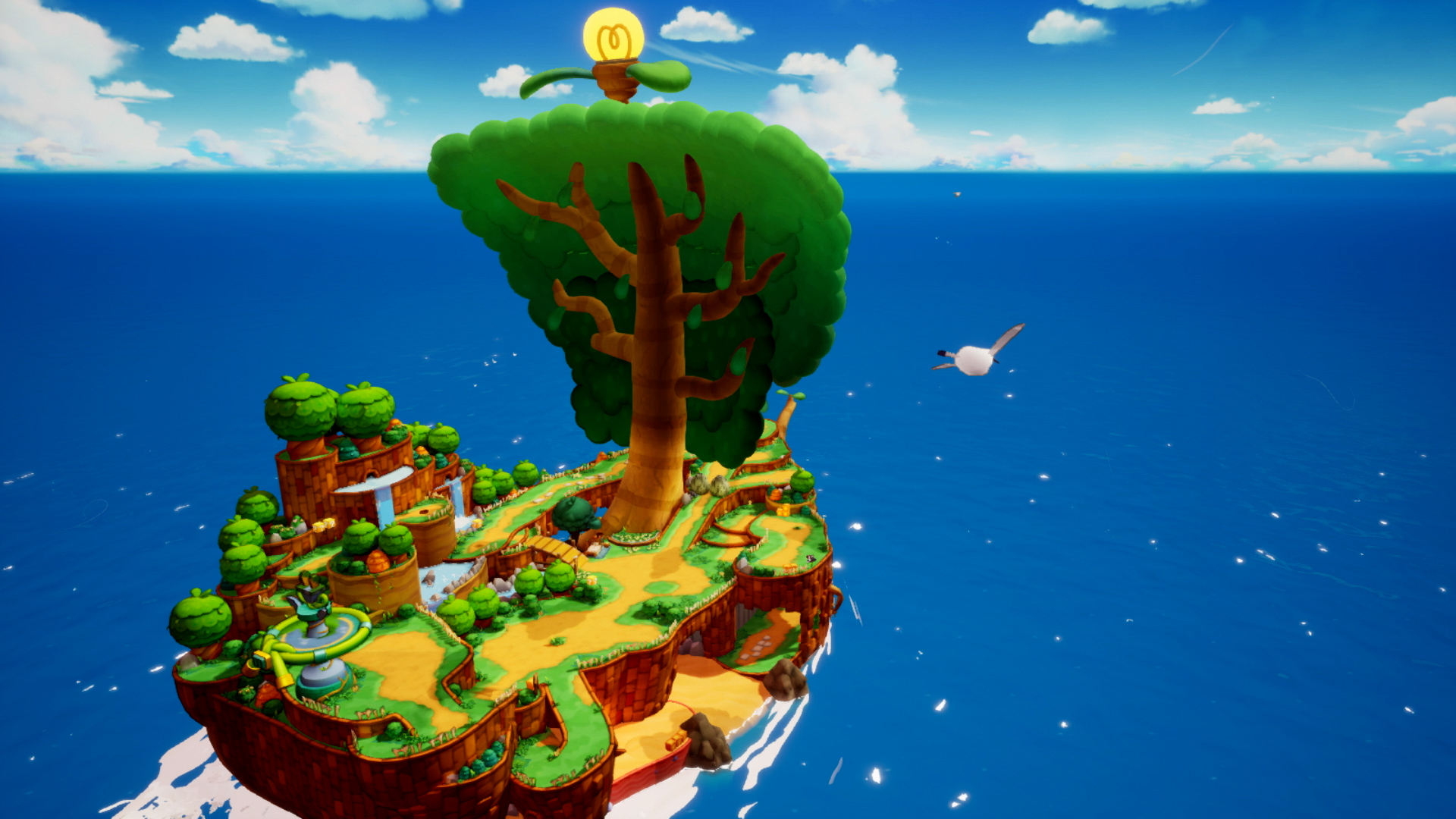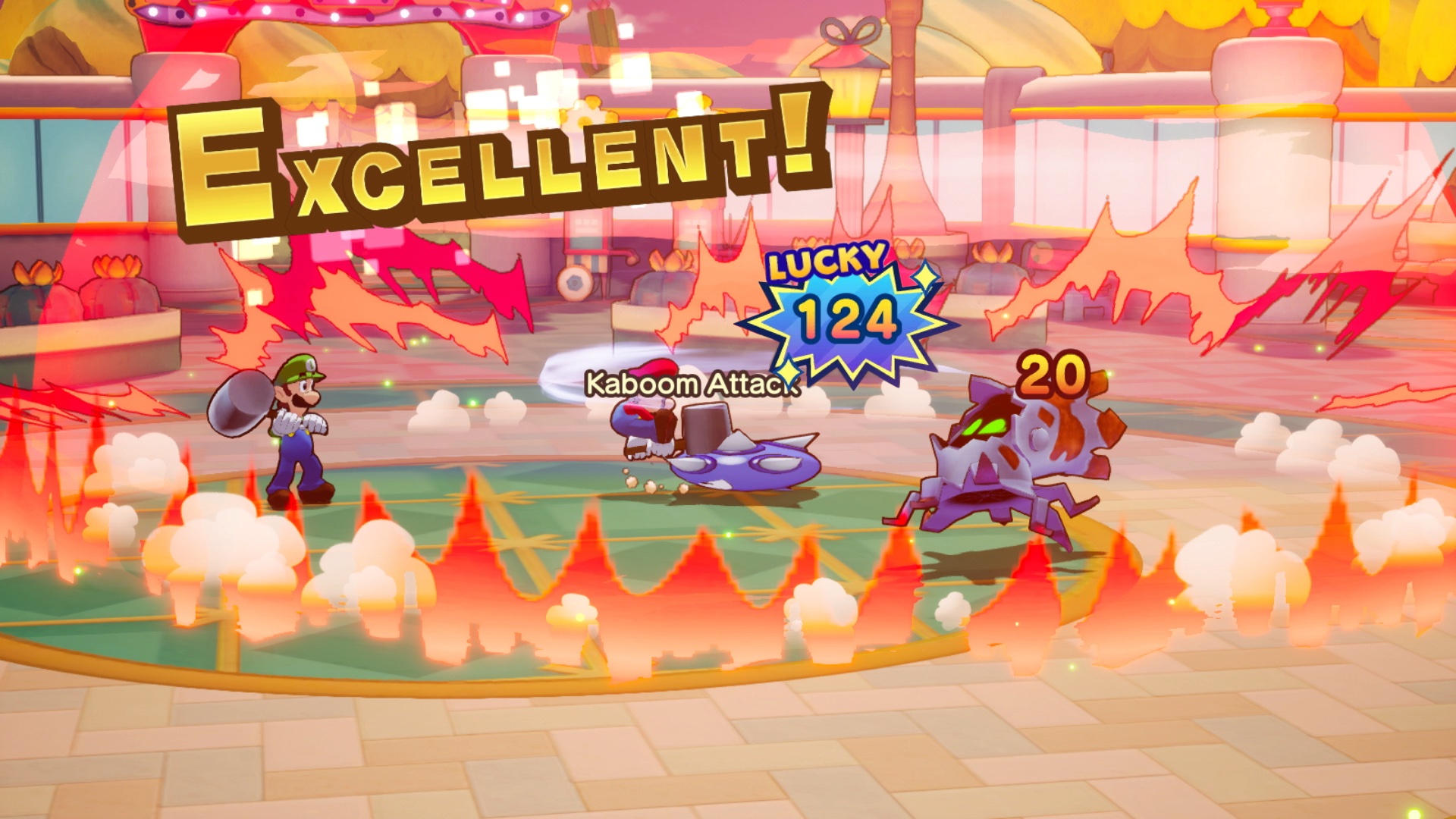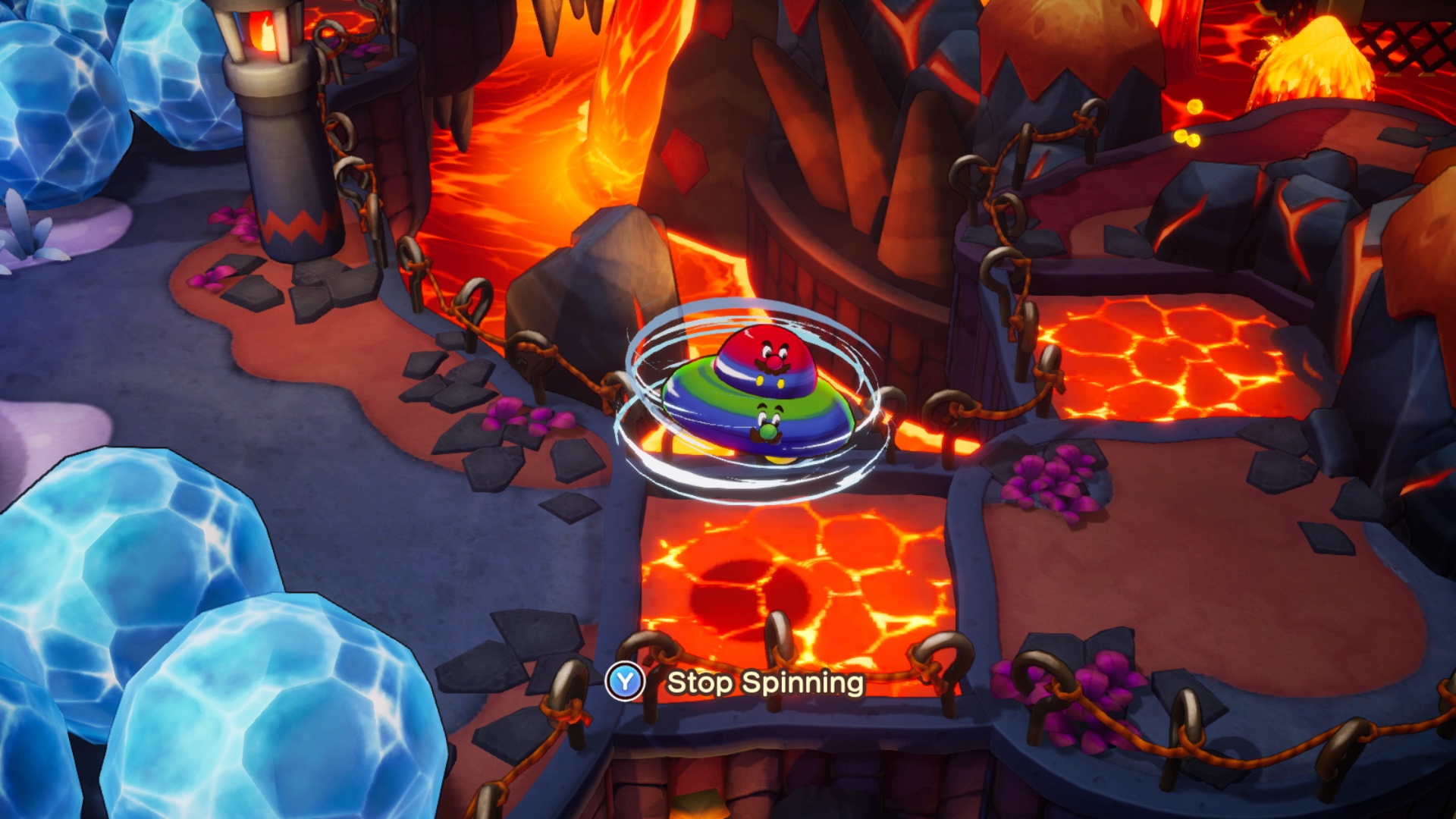Read Polygon’s Mario & Luigi: Brothership review
Nintendo’s Mario & Luigi series has long been home to clever innovations, allowing players to simultaneously play Super Mario Bros. can pilot for comedic adventures that often take advantage of the hardware they are designed for. Previous games integrated time travel, Luigi’s strange dreams, and exploring the contents of Bowser’s guts as inspiration.
Mario & Luigi: Brotherhoodthe first new Mario & Luigi game in almost a decade, it seems content to repeat previous ideas from the franchise. Brotherhood brings a handful of new ideas to the Mario & Luigi formula, but only a few of them keep the 20-year franchise feeling fresh.
Brotherhood opens with Mario and Luigi slipping through a portal that transports them from the Mushroom Kingdom to a new destination known as Concordia. Their arrival is good news for the residents of Concordia, who recently saw their sacred Uni-Tree destroyed and their vast continent splintered into a series of floating islands. Bad boys are to blame. With the help of Mario and Luigi, and a seaworthy ship/landmass known as Shipshape Island, the Concordians hope to put their home back together.
Mario and Luigi help them Brotherhood Journey is a long list of NPCs, almost all of which are themed around electrical sockets. There’s the pig-like Snoutlet, who acts as guide and interpreter throughout the story; Connie, a courageous Wattanist who ensures a burgeoning new growth of the Uni-Tree on Shipshape; and Arc, an expert navigator of the high seas from Concordia.
As the story progresses and Mario and Luigi piece together more scattered pieces of Concordia, Shipshape becomes filled with dozens of additional characters: vendors, artisans, and questers. These people are full of busy work and side missions for Mario and Luigi, and you always have a pile of redundant things to do. Brotherhood‘s story.
To reunite the islands of Concordia, you must travel across different seas and explore new locations. Mario and Luigi launch from a cannon to each island, looking for a lighthouse with a plug that will restore power to the Uni-Tree’s natural resource, Connectar. Each island has a series of puzzles, obstacles and quirky characters in need of help that separates the brothers from their lighthouse. There are also new and familiar enemies, some native to Concordia and some adopted from the Mushroom Kingdom.
Mario and Luigi battle these monsters in turn-based battles that build on the Mario and Luigi battle formula. Mario and Luigi each get a turn and are controlled with bro-specific buttons, stomping on bad guys’ heads or hitting them with a series of hammer moves. Each attack requires a careful series of timed button presses that are maintained BrotherhoodThe fight is fascinating. The brothers can also work together for complex Bros. attacks, which require a long series of rapid fire attacks. They’re fascinating, sometimes annoying, and eventually start to wear thin. Battles last a long time thanks to Bros.’s long and rubbery animations. Attacks, but the game introduces new moves and gadgets over time to spice things up.
Fortunately, many fights can be avoided. Fleeing a fight is always an option (and always successful). You’ll just miss out on XP and coins that make Mario and Luigi stronger, so participating in as many battles as possible feels anything but mandatory.
The intense combat and flashy Bros. attacks will feel very familiar to longtime Mario and Luigi fans. To mix things up, Brotherhood introduces a new system called Battle Plugs, items that give Mario and Luigi additional offensive and defensive powers in battle. Battle Plugs add special effects to the brothers’ attacks, unleashing explosive shockwaves or a storm of spiked balls at enemies. They can even automate some moves, with certain combinations unlocking other effects in battle. By selecting which Battle Plugs suit each combat situation, the battle remains interesting. You are forced to experiment with multiple plug-in gear as they lose energy over time and need to be recharged.
As Mario and Luigi level up and acquire new types of equipment, such as super-powerful overalls and special gloves, you have the option to customize them to suit your playstyle. During my playthrough, I controlled Mario as my favorite jump attacker: him was Jumpman finally – and Luigi to focus on hammer skills. While neither plays radically different, it was fun to try to keep each brother to a minimum to fit my fantasy of how their personality factors into the way they play.
On the islands of Concordia, Mario and Luigi are asked to complete tasks and solve puzzles for various characters. These moments often require players to use another new feature Brotherhood: Luigi Logic. At certain points in the game, Luigi gets a clever idea about how to avoid obstacles or move through the environment in a new way. Luigi Logic is how players learn to transform Mario and Luigi into new forms; they are transformed from a tango duo into a spinning UFO; another turns them into a rolling ball so they can navigate pipe puzzles, similar to Samus Aran morph-balling through the Metroid games. Luigi Logic also hands off mundane tasks to Luigi; he smashes boxes and takes coins so Mario can focus on the task at hand.
Luigi Logic eventually finds his way in combat. The game’s biggest boss battles often involve Luigi noticing a unique feature of a boss battle arena and then executing a situationally unique Bros. attack. That helps break up some of the more arduous combat in the game, which can feel repetitive quite quickly.
Repetition yes Mario & Luigi: Brotherhood‘s greatest sin. Whether it’s the turn-based battles in the game, which always feel plain little bit too long, numerous fetch missions that require a lot of travel, or a bit of superfluous dialogue, I found myself suffering from Brotherhood‘s lack of brevity. Every time the fast-forward prompt appeared at the bottom right of the screen, I pressed it in anger.
It doesn’t help that the story of Mario & Luigi: Brotherhood is not particularly convincing. A group of bad guys known as Zokket and the Extension Corps – a very good name, mind you – are responsible for almost all the bad things that have happened to Concordia, and you spend most of Brotherhood‘s turgid story that haunts them. There are a handful of side stories involving the NPCs you interact with and some familiar allies from the Mushroom Kingdom, but none are particularly interesting. More serious, however, is the humor Brotherhood. Mario and Luigi’s RPG spin-offs are often wonderfully absurd and chock-full of jokes, but Brotherhood‘s attempts at humor often fall flat. Oddly enough, the game seems to realize its reliance on bad puns and dad jokes; there are multiple moments of dead silence to punctuate a joke and characters groaning at the game’s jokes.
The action and leveling of Mario and Luigi are the better parts of it Brotherhood. There is a long, long list of Bros. Attacks, unlockables and equipment, Battle Plugs, and craftable things to use in battle. There’s even a fishing mini-game, which reaffirms Mario and Luigi’s RPG bona fides.
So it’s been a long wait for a new Mario & Luigi game Brotherhood is welcome to at least bring back the franchise. But Nintendo’s new game takes fewer, far less interesting risks in reimagining action-RPG Mario & Luigi gameplay compared to its predecessors. Instead of, Mario & Luigi: Brotherhoodwith its roughly 25 hour story and endless list of things to check off, it seems to have learned an unfortunate lesson from other RPGs, favoring bloat over reinvention.
Mario & Luigi: Brotherhood will be released on Nintendo Switch on November 7. The game was reviewed on Switch using a pre-release download code from Nintendo. Vox Media has affiliate partnerships. These do not influence editorial content, although Vox Media may earn commissions on products purchased through affiliate links. Additional information about Polygon’s ethics policy can be found here.




